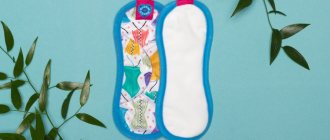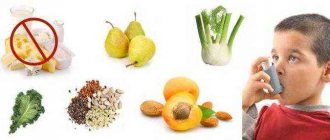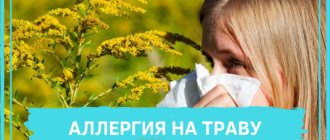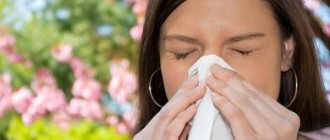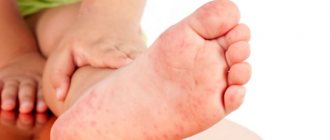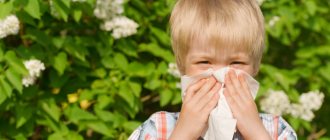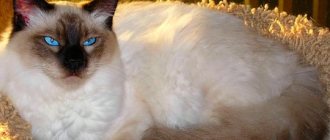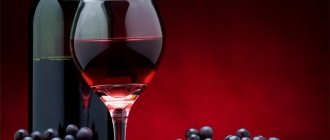In total, there are more than 60 species of trees, grasses and cereals that cause pollen allergies (hay fever). Allergenic plants are divided into three groups - trees, cereals and weeds. There are several seasons of exacerbation of hay fever - spring, early summer, late summer or summer-autumn. They can also be called spring or flowering of trees, summer or flowering of cereals, autumn or flowering of weeds.
In most cases, allergies occur to pollen of 2-3 plant species. An exacerbation of hay fever lasts about a month (the period of flowering of the plant that causes an allergic reaction). However, sometimes patients experience multiple sensitization (polysensitization), when the exacerbation of allergies continues almost throughout the warm season.
Which trees cause allergies?
The opinion that hay fever occurs only because of flowers is wrong. Pollen allergies are triggered by pollen from both flowers and flowering grasses, weeds and trees. Birch is considered the main allergen. This tree begins to bloom in April and lasts until mid-May. Its pollen contains a large amount of protein compounds that are considered allergic. With the help of the wind, birch pollen is transported over a large number of kilometers. Birch groves pose a huge danger.
Doctors consider alder and hazel to be common culprits of the disease. Allergies to this type of tree reach their peak in May. And flowering ends already in June. Therefore, patients will have to suffer. We suggest you familiarize yourself with other tree allergens:
| Apple tree | Elm | Poplar | Maple |
| Willow | Vomit | Ash | Oak |
The amount of pollen produced varies from tree to tree. Scientists have found that hay fever affects mainly urban residents rather than rural residents. The situation is aggravated by the fact that all these plants cause many cross-reactions with our usual food products. Thus, the disease brings into the prohibited zone not only walks in the garden or just along the street, but also food.
A few words about the organization of dacha space
Country space is not only plants, but also lawns, hedges, paths and so on. What could pose a threat and how to minimize the risks?
Find an alternative to a traditional lawn
Allergy sufferers are advised not only to stop mowing the lawn, but to completely replace it. An alternative to lawn grasses can be, for example, small pebbles. Or, instead of lawn grass, you can plant ground cover plants - for example, periwinkle.
A pond is a luxury unaffordable for an allergy sufferer
A pond is a popular detail of a dacha space.
With the help of water, it is possible to revive the landscape, diversify the landscape with aquatic and coastal plants. However, allergy sufferers are advised to avoid ponds: many plants used to decorate them can cause various allergic reactions. A fountain in the middle of a flowerbed is an allergy-free alternative to a pond. An alternative to a classic pond can be a small fountain, decorated with potted indoor plants or installed in the center of the flowerbed.
Hedges are a source of danger...
... if they contain plants that provoke allergies. If you’ve decided to make a hedge at your dacha, choose plants for it from among safe crops.
Get rid of stumps
It's not just about what's left of the cut down trees. Some people use hemp or tree trunks to decorate their summer cottage. There is no place for such design solutions in the garden of an allergy sufferer: stumps and tree trunks are prone to rotting, and this is a potential source of problems. Allergies are not a reason to give up your summer cottage! The main thing is to properly organize your workspace and visit a doctor before going on a country holiday.
Symptoms of hay fever
All the signs of an allergy will not take long to appear. And if they are detected in time and corrective measures are taken, complications can be avoided. And the symptoms are:
| Skin rash | Conjunctivitis | Itching and burning | Quincke's edema |
| Allergic rhinitis | Sore throat | Hives | Coughing attacks |
Unfortunately, many people confuse an allergy to tree pollen with a cold and begin treatment on their own, which is a priori incorrect. This leads to many complications that aggravate the situation and make the disease practically incurable. This may be followed by a manifestation such as suffocation. As a rule, it occurs after severe and frequent attacks of dry cough. A person is unable to inhale the volume of air he needs and simply begins to suffocate. This is the first symptom of bronchial asthma. Also, there are frequent cases of anaphylactic shock, which can be fatal. Therefore, if you notice the first signs during the flowering period, consult a doctor immediately.
What can you plant to avoid allergies?
It may seem that you can’t plant anything at all in your dacha if one of the family members suffers from allergies.
You should not go to extremes, because there are many plants, the risk of developing an allergy to which is minimal. There are many plants, the risk of developing an allergy to which is minimal. How to replace plants that you had to get rid of:
- safe shrubs include honeysuckle, serviceberry, and viburnum;
- from climbing plants - clematis, decorative honeysuckle honeysuckle, virgin grapes, nasturtium;
- Suitable flowers include roses, pansies, tulips, bells, and snowdrops.
Of course, this is not the entire list.
And it is important to understand that even seemingly safe plants can cause allergies in some people. This is why it is so important to visit a doctor and determine exactly which cultures cause a hyperreaction on the part of the body, and which ones it remains completely indifferent to. Some may have an allergic reaction to plants considered safe
Treatment of allergies with medications
The first thing you need to do is minimize contact with trees and their pollen. Try to stay at home as much as possible, do not go out unless necessary. Next, be sure to consult a doctor. Through simple tests, the type of allergen will be identified, and you can easily defeat this disease at the initial stage of its manifestation. As a rule, doctors prescribe antihistamines for diseases such as allergies to tree pollen. These agents block the production of histamine and prevent the allergen from spreading throughout the body. Three generations of drugs have been developed. Each subsequent one is considered more perfect than the previous one. The third generation, unlike the first, has virtually no contraindications or adverse reactions. Here are the most popular among them:
| Diphenhydramine | Available in the form of tablets and injections. A potent drug. It should only be prescribed by a doctor, as it has many contraindications and adverse reactions. |
| Diazolin | It is used for both treatment and prevention of pollen allergies. Relieves any symptoms of hay fever at its initial stage. Effectively fights Quincke's edema. Contraindicated for gastrointestinal diseases. |
| Suprastin | The most effective drug among the first generation. It is used for various forms of dermatitis, allergic cough and rhinitis. Relieves symptoms of Quincke's edema and urticaria. Contraindicated for use in patients with cardiac dysfunction or bronchial asthma. |
| Claridol | Effective in the treatment of seasonal rhinitis. Eliminates itching and rashes on the skin. Fights urticaria and Quincke's edema. Its effect begins within half an hour after administration. The drug is contraindicated in children under two years of age. |
| Lomilan | Used in the treatment of hay fever. Relieves the following symptoms: rhinitis, allergic conjunctivitis, rash, chronic urticaria. Adverse reactions include dry mouth, tachycardia, drowsiness, nausea, and liver disorders. |
| Claritin | The drug is prescribed to eliminate the symptoms of pollen allergy. Used to treat chronic urticaria. It is a second generation antihistamine. May cause drowsiness, lethargy, dizziness. |
| Trexil | Eliminates allergic symptoms such as sneezing, swelling, lacrimation, coughing. Helps with rashes and hives. Individual intolerance to the components is considered a contraindication. The drug is taken regardless of meals. Does not affect the functioning of the central nervous system. |
| Zyrtec | This drug belongs to the third generation. Copes with symptoms of pollen allergies in the shortest possible time. The effect lasts up to two days. If the correct dosage is not followed, it can cause nausea, vomiting, and headache. |
Among all allergy symptoms, the most common is rhinitis. It will take quite a long time to treat him with pills. We need drugs to provide rapid local action. These include drops and sprays. But before buying them, it is worth understanding their varieties and taking into account all possible risks. So, drops come in the following types:
- Vasoconstrictors;
- Hormonal;
- Immunomodulatory;
- Antihistamines;
- Cleaning products.
Vasoconstrictor drops are recommended for patients with acute allergies. These drugs are for severe nasal congestion, which interferes with leading a normal lifestyle. The effect is guaranteed from the first minutes after use. The amount of discharge is reduced.
These drops are used for emergency use, so they should not be taken for more than five days. If you do not follow the doctor’s recommendations or instructions, addiction may occur and swelling of the mucous membrane will resume. Then it will be quite difficult to choose the right drug, because a reaction can be observed to any of them. Vasoconstrictor drops include:
| Naphthyzin | Sanorin | Nazivin | Tizin |
| Nazol | Farial | Rinazolin | Galazolin |
For severe runny nose, large amounts of discharge and swelling, hormonal medications are prescribed. They are produced exclusively in the form of a spray, since strict adherence to their dosage is necessary, which cannot be achieved with drops. These drugs have a good decongestant effect and make breathing easier. All mucus is removed in a short period of time. Their use is limited to five days, due to their hormonal basis. Failure to comply with this rule can lead to addiction and worsen the situation. The patient's immune system may be weakened, and gastrointestinal diseases may occur. Check out the following hormonal sprays:
- Benacap;
- Nasonex;
- Prednisolone;
- Flixonase;
- Fluticasone.
To activate the body's defenses, immunomodulating drops and sprays are used. They promote rapid healing of the mucous membrane and its normal functioning. As a rule, they are prescribed for mild forms of rhinitis or at the final stage of treatment. The most popular among them are IRS-19 and Deritan. The most commonly used are antihistamine drops. They reduce the level of histamine in the nasal cavity and remove the allergen from it. Allowed to be used for a long time. Therefore, such drops are effective not only for hay fever, but also for year-round allergies. These include: Fenistal, Allergodil, Kromhexal, Zyrtec.
The safest and most free of any side effects are nasal rinses. Such drugs promote natural healing, restore the protective lining of the nasal cavity, dilute mucus and remove it. They are made on the basis of sea salt and water, so they have no contraindications for use. Often prescribed to children and pregnant women, because their bodies are the most vulnerable and sensitive to chemicals. Check out these tools:
| Humer | Quicks | Aquamaris | Morenasal |
| Aqualor | Salin | Marimer | Dolphin |
Treatment of allergies to tree pollen during pregnancy
During pregnancy, it is better not to take risks and seek advice from your doctor. Based on complaints, safe antihistamines, for example, Suprastin, will be prescribed. It can be used no earlier than the second trimester, both for mild manifestations of allergies and for severe forms. Under such conditions, Tavegil is used. Sometimes allergists prescribe the drug Azelastine. Its use is allowed at any stage of pregnancy, subject to an adequate risk assessment.
Expectant mothers are recommended to use the latest generation of antihistamines. They were developed taking into account all the past trials and errors, and are considered safe, harmless means, namely: Zyrtec, Telfast, Parlazin. But such a remedy as Diphenhydramine is strictly prohibited. Its use may cause uterine cramps. Pipolfen and Astemizole are also not recommended, as they can have a toxic effect on the fetus.
Nasal drops should be chosen only on a salt basis. These are any cleaning products. They do not pose any danger to the fetus; they penetrate the body and do not have a toxic effect. Aquamaris is considered to be often used. The spray helps remove mucus and moisturize damaged mucous membranes. You can use Pinosol drops. They contain extracts of eucalyptus, mint and pine.
Treatment of children
Nowadays, many allergy medications have been developed for children. Available in both tablet and syrup form. This allows you to avoid delaying treatment even for the smallest infants. Thus, Claritin syrup relieves any allergic manifestations and makes breathing easier during rhinitis. The action begins two hours after administration. Perfectly relieves skin manifestations of the disease.
Another effective remedy is Erius syrup. The drug belongs to the third generation. The result lasts for 24 hours. Used to relieve hives, runny nose, itching and swelling of tissues and mucous membranes. The syrup does not have a sedative effect and does not distract the baby’s attention.
As for drops and sprays, you can give your child the following:
| Zodak | You need to take four drops before bed and in the morning. It is used even by newborn infants. |
| Fenistil | The drug relieves nasal congestion and itching in the baby from the first month of his life. The effect will become noticeable after 10 minutes. |
| Prevalin | They significantly facilitate the child’s breathing and free the nasal cavity from mucus. The effect occurs a couple of hours after application. |
| Vibrocil | The drops are vasoconstrictors, so using them for more than five days is prohibited. Prescribed to children over one year of age. |
| Nasonex | Relieves inflammation of the nasal mucosa. The result remains noticeable for three days. Suitable for one year of age and older. |
| Cromohexal | The drug can be used for a long time until the allergen ceases to have its harmful effect. Used by children from the age of four. |
| Flixonase | The drug is hormonal. The effect of use occurs from the first minutes. Has an anti-inflammatory effect. Prescribed to children from four years of age. |
It is worth noting that in order to avoid allergies to tree pollen in yourself or your child, you need to know all the flowering periods of plants, which will help you keep your immune system functioning normally. To get acquainted with such a flowering calendar, we recommend following this link.
Characteristics of the disease
Pollen enters the body through the eyes and respiratory tract. Then it settles on the mucous membrane, which leads to irritation and a negative reaction. Diseases are provoked by flying and quickly spreading pollen from those trees and plants that are common in the region. Symptoms of the disease actively appear during flowering seasons. The following flowering calendar is typical for central Russia:
| Pollen | Plants | Flowering time |
| Deciduous shrubs | Alder, hazel, willow | End of March – April |
| Deciduous trees | Oaks and birches, alder and ash, poplar and willows, maple and aspen | April May |
| Coniferous trees | Pine and spruce | May June |
| Cereals and herbaceous plants | Wheatgrass, fescue, mint, rye, dandelion | May – July |
| Broad-leaved trees and perennial grasses | Linden, plantain | June July |
| Flowering plants | Nettle | July August |
| Weeds | Wormwood, quinoa and ragweed | July – October |
The pollen of the listed plants, especially poplar, birch and other deciduous trees, is widely distributed, has very small sizes and is easily carried by the wind over a large area. In the northern regions of the country, the inflorescence begins later, and in the southern regions - earlier than in the middle zone. In cold springs and summers, the duration of flowering increases, and in hot climates it occurs faster.
It is interesting that sometimes symptoms of hay fever in children and adults also appear during the cold season. The reasons for this lie in the negative effects of frost, tobacco smoke, the smell of paint and other factors that provoke an exacerbation of the disease. Let's look at the symptoms of hay fever that will help you recognize the disease and begin proper treatment.
Traditional medicine against hay fever
Traditional medicine has thousands of recipes for getting rid of pollen allergies. Various infusions from the series are very effective. For example, you can take 1 spoon of herb and pour boiling water over it. After the decoction has infused for about 20 minutes, drink it. You need to drink three times a day, instead of the usual tea. Calendula can be used for these purposes. You need to prepare it more concentrated and drink three tablespoons.
If your type of allergen does not cause cross-reactions with chamomile, you can use its infusions. It is known that to completely get rid of allergies, it is necessary to cleanse the body. Oatmeal can help with this. You need to brew 0.5 kg of flakes with two liters of boiling water in a thermal container, leave for 10 hours (leave overnight), then strain and take throughout the day.

It is recommended to use herbal teas:
- Viburnum flowers, licorice root, elecampane, sage and mint. Take two spoons of this mixture, pour boiling water and leave for 8 hours. Take this remedy 4 times a day, approximately 50-70 grams.
- Calamus, comfrey and St. John's wort. These crushed ingredients are poured into boiling water and boiled for about 10 minutes. Strain the broth and gargle with it several times a day.
Treatment with juices is quite common. The following vegetables and fruits are used in this capacity: carrots, cauliflower, cucumber, celery, parsley, apples. Such juices are considered natural diuretics that remove the harmful allergen along with the liquid. To treat hay fever, populists use alcohol tinctures. To do this, take an echinacea inflorescence and soak it in a glass of vodka or alcohol. After the tincture has stood for a week, strain it. It is recommended to use 25 drops every day, first diluting them in one hundred grams of water.
At home, you can also prepare drops and nasal rinses. Honey is often used for this. Dilute a small amount of it in warm water and drip twice a day. Aloe or Kalanchoe juice works great for nasal congestion. It is often recommended to drip onion juice. To prepare rinsing agents, use simple table or sea salt. A spoonful of this substance is diluted in a glass of boiled water. Rinse your nose twice a day.
To do this, you can also buy saline solution at the pharmacy. Its composition is a pure saline solution, which will promote rapid healing of the mucous membrane and normalize its functioning. You can also rinse your nose with chamomile infusion. Try to take baths with eucalyptus or pine needle extracts more often - this will help clear your airways. Don’t forget about grandma’s old method - inhalation of potato vapors.
How to treat a child's pollen allergy
Hay fever is an allergic disease in children and adults caused by plant pollen.
The source is only light pollen, which is carried by the wind. Allergic disease occurs when pollen-producing plants produce pollen in large quantities. Pollen must contain an active specific principle. The allergenic properties of pollen are determined by a globular protein, which is conventionally called the group E antigen. In children predisposed to physical processes, it produces IgE.
The participation of another finger antigen, K, in the development of hay fever remains controversial. In addition to protein, pollen granules contain pollen oil, which plays a significant role in the development of contact dermatitis.
In addition, allergic diseases can be caused by seed hairs, fibers, plant parts, even bacteria, fungi and viruses living on plants, and primarily on inflorescences.
When does hay fever begin in children?
Allergies to pollen most often begin between the ages of 1 and 7 years; the largest number of affected children occurs between the ages of 8 and 14 years. Depending on the seasonality of the disease, three types of hay fever are distinguished:
- Spring - late March early June, in most cases due to increased sensitivity to pollen of trees and shrubs.
- Summer hay fever usually occurs from mid-May and lasts until mid or late July. This type of disease is determined by increased sensitivity to grass pollen.
- Summer - from mid-August to the end of October, it depends on hypersensitivity to pollen from ragweed and some weeds.
Clinical manifestations of pollen allergy in children
Hay fever manifests itself in a variety of ways, and largely depends on the localization of the allergic reaction allergen-reagins. Taking into account the main symptoms, the following clinical forms can be distinguished:
- excessive mucous discharge from the nose or obstruction;
- increased sneezing;
- conjunctivitis and inflammation of the eyelid margins;
- seasonal headache.
- pharyngitis and laryngitis;
- bronchial asthma;
- hearing loss and itching in the ears;
- seasonal inflammation of the genital organs and painful urination;
- contact dermatitis and urticaria;
- seasonal character and mental disorders.
As a rule, these forms of pollen allergies in children rarely occur in isolated form. There is usually a combination of symptoms. Thus, patients often experience frequent sneezing, rhinorrhea, conjunctivitis, itching in the ears and hearing impairment as a result of obstruction of the auditory tubes.
Treatment of bronchiolitis in young children
Irritated pharyngeal mucosa and postnasal secretion (protracted cough with viscous secretion) lead to an obsessive and severe cough, and impaired drainage of the paranasal sinuses leads to constant headache.
Seasonal bronchial asthma is a common manifestation of hay fever and usually occurs in children during the flowering period. Despite the diversity of the clinical picture of hay fever, the most common syndromes are rhino-conjunctival syndrome in combination with attacks of pollen bronchitis and asthma.
Hay fever is also called hay fever, but an increase in body temperature is usually unusual for this type of disease. Therefore this is a misconception. Fever is usually a symptom of a secondary infectious process and not a consequence of an allergic process.
Manifestation of hay fever in a child
The allergy usually increases over 2-3 years from season to season, and then (with a long course) its manifestations stabilize. During the flowering period, clinical symptoms develop gradually, reaching a maximum in most cases in the middle of flowering.
A child suffering from hay fever feels worst during the day in the morning. The intensity of the symptoms largely depends on the factors that determine the concentration of pollen in the air, which is directly dependent on the flowering of the plant.
There is especially a lot of it in the morning in windy, sunny weather, and less in gloomy, humid or rainy times. The flowering calendar of plants helps to analyze the time of manifestation of hay fever.
Diagnostics
The diagnosis of hay fever is usually made based on indications in the anamnesis of a clear seasonality of the disease. In some cases, symptoms similar to hay fever may be caused by reasons other than hypersensitivity to pollen.
These include:
- non-plant allergens,
- infection,
- increased physical activity,
- emotional stress at the end of the school year,
- sharp fluctuations in temperature and air humidity,
- enriching the diet with plant foods,
- insect bites and other factors.
It is very difficult to diagnose hay fever at the very beginning of the disease. But even at first, some of its features help to recognize the allergic nature of the process.
If the suspected source of hay fever is determined based on the history, allergy tests are performed. It is best to conduct research with pollen allergens after the child’s clinical symptoms have completely disappeared, that is, 2-3 months after the end of the flowering period.
Diagnosis of hay fever using skin or intradermal tests is carried out taking into account indications and contraindications. For treatment, allergens prepared from pollen of the most allergenic herbs and trees are used.
How to help with ear inflammation in a child
If the results of skin testing and medical history do not correspond, provocative tests are performed. They occupy one of the main places in the diagnosis of hay fever, which is due to their demonstrativeness, the ability to avoid severe side effects, and accessibility.
In cases where skin or provocative tests are associated with a certain risk of unwanted side effects, the Prausnitz-Küstner passive transfer test can be used.
It is based on the fact that the blood serum of a child with hay fever contains reagins that can be fixed in the skin of another patient.
This test is performed on children:
- with eczema;
- with severe hay fever or severe hypersensitivity to pollen;
- with concomitant bronchial asthma, requiring the use of ephedrine and antihistamines that inhibit skin and provocative tests.
There are many tests and methods that can be used to determine hay fever in children and identify its etiological factor. However, experience shows that the diagnosis of hay fever is not always made in a timely manner and sometimes children suffering from this form of allergy are unsuccessfully treated for a long time by an ophthalmologist or otolaryngologist.
The main reasons for untimely and incomplete diagnosis of hay fever are:
- the occurrence of clinical signs of the disease during rest in the absence of a pediatrician or allergist;
- parents' ignorance of the symptoms of the disease;
- lack of proper doctor experience in diagnosing hay fever;
- refusal of examination;
- absence of the “culprit” allergen during an allergological examination.
How to treat hay fever in children
Treatment of pollen allergy in children should be carried out during the period of exacerbation, and in the absence of clinical symptoms of the disease (anti-relapse treatment). Schematically, treatment of children in the acute period of the disease should proceed as follows:
1). When collecting an allergy history, you need to tentatively identify the allergen and stop contact with it (if possible) or reduce its penetration into the body (staying at home or in a hospital with the windows closed).
Outside the apartment, you should wear safety glasses that partially protect your eyes from non-specific irritants (light, wind). Reducing contact with the allergen helps to more quickly normalize the reactivity of the mucous membranes.
2). Prescribe antihistamines orally or intramuscularly in the usual dose. A good effect is observed when using the following drugs:
In cases where antihistamines cause a pronounced atropine-like effect, their use should be limited, as this can lead to bronchial asthma.
What to do if your child has neck pain
3). Reduce nonspecific irritants (draft odors, smoke), since with increased sensitivity of the nerve endings of the nose and pharynx, the mucous membrane of the child’s eyes easily succumbs to attacks of sneezing from the weakest irritants.
4). Instill one of the vasoconstrictor drugs into the nose to improve nasal breathing, reduce swelling of the nasal mucosa and restore patency of the nasolacrimal duct:
- Ephedrine hydrochloride - 2% solution 10 ml,
- Adrenaline hydrochloride – 0.1% solution 1 ml,
- Naphthyzin – 0.025 or 0.05% solution,
- Sanorin and Galazolin – 0.05% solution.
5). It is more effective to instill vasoconstrictors with hydrocortisone into the nose - ephedrine hydrochloride - 2% solution 10 ml, adrenaline hydrochloride - 0.1% solution - 1 ml, hydrocortisone 25-50 mg (1-2 ml).
You can combine instillation of one of the vasoconstrictor drugs into the nose with inhalation of becotide through the nose at a dose of 50-100 mcg 3-4 times a day.
6). Instill a solution of cromolyn sodium (the contents of 2-3 capsules diluted in 1 ml of isotonic sodium chloride solution) 3-4 drops into each nostril after 4-6 hours. After instillation, you should pinch your nose, take a vertical position, and massage it, which allows distribute the drug evenly. It can also be used in the form of inhalations.
7). Prescribe the drug Zaditen orally.
8). Use belladonna preparations.
9). In case of asthmatic bronchitis or an attack of bronchial asthma, treatment should be carried out as for bronchial asthma.
When these measures are performed, improvement occurs relatively quickly, and in some cases the symptoms of the disease disappear. The main importance for pollen allergies in children is the elimination or reduction of exposure to the pollen allergen. If the allergen is not eliminated, the effectiveness of the complex is insignificant.
In the complex anti-relapse treatment of hay fever the following can be used:
- histaglobulin,
- cromolyn sodium,
- levamisole
Hay fever in children sometimes disappears without treatment; this rarely happens in adulthood. However, unlike adults, in children the disease can transform into bronchial asthma.
Therefore, if a child has hay fever, it is necessary to carry out rational therapy and anti-relapse measures. Prevention of hay fever follows the same principles as other allergic diseases.
Particular attention should be paid to timely sanitation of chronic diseases of the nose, pharynx, eyes, as they have increased sensitivity to allergens.
Source: https://medprior.ru/allergiju-pylcu-rebenka/
Proper nutrition for hay fever
The main condition for curing any allergy is following a hypoallergenic diet. Since hay fever causes many cross-reactions, you should avoid the following foods:
| Birch pollen |
|
| Apple pollen |
|
| Poplar pollen |
|
| Alder and hazel pollen |
|
It is also worth limiting your consumption of dairy products and eggs. Try to exclude any seafood from your diet during the flowering period. Try to eat fruits and berries less often. Drinking alcohol is strictly prohibited. Protect yourself from using various seasonings and spices, mustard, and sauces. Stop eating smoked and salty foods. It is better to avoid salt altogether. In addition to restrictions, there are many products that must be included:
- Dietary meat: beef, rabbit and turkey. Cook only steamed, oven or boiled.
- Some vegetables: cabbage, cauliflower, broccoli, zucchini, zucchini.
- Porridge: buckwheat, rice, pearl barley, oatmeal, wheat. But, semolina is prohibited.
- You can only use vegetable oil: olive, sesame, flaxseed.
- Sometimes kefir and yogurt without flavoring are allowed.
- For drinks you can drink dried fruit compotes, green and mint tea.
Complications
Unfortunately, hay fever does not go away without complications, since the mucous membrane of the nasopharynx, organs of the respiratory tract and nasal sinus are affected. Among the known consequences of the disease, the following problems are worth noting:
- development of allergic sinusitis;
- internal otitis;
- exacerbation of the disease, a chronic form of hay fever develops;
- eye problems, including conjunctivitis;
- Quincke's edema;
- bronchial asthma.
All complications are extremely dangerous for the child’s health. But among all the problems, highly specialized doctors highlight bronchial asthma, which poses a threat to the baby’s life.
Can hay fever cause bronchial asthma?
With hay fever, damage to the lungs and bronchi follows, which leads to the development of new diseases such as asthma. By its specificity, this disease is accompanied by attacks of suffocation, the inability to inhale or exhale, and the need to use an inhaler.
If you start hay fever and do not provide timely assistance to your child, he may develop a chronic form of bronchial asthma, which is almost impossible to cure.
Useful tips
If you are allergic to tree pollen, personal hygiene is important. To do this, take a shower every time you come in from outside. If this is not possible, be sure to rinse your nose and wash thoroughly. Since pollen remains on the surface of our clothes, we must definitely change into home clothes. Wear sunglasses when outdoors to protect your eyes from allergens.
Carry out daily wet cleaning of the premises. It will be useful to purchase a humidifier and air purifier. It is very important to maintain the required humidity in the apartment. If possible, get rid of carpeting and soft toys. Pets walking on the street, window, or balcony are carriers of hay fever.
During the flowering period, it is better to take a vacation and change your place of residence to a different climate zone. Go to the sea more often. If this is not possible, cover the windows of your home with damp sheets that will catch the flow of dust and pollen. Before the start of the season, it is better to use some medications for prevention. An allergist will help you with this.
A child has an allergy to flowers and pollen: symptoms and treatment, causes, preventive measures
Most often, flowering trees and plants are associated with the arrival of the warm season and the future harvest. However, recently there are more and more people suffering from pollen allergies (hay fever) in spring and summer. The disease often affects children, and the number of small allergy sufferers increases every year. How to deal with hay fever in a child?
Why is flower allergy dangerous, and why does it appear in children?
Allergy to flowering is the body’s reaction to substances found in plant pollen. The disease is insidious in that its symptoms resemble those of a cold. For a long time, many parents may not realize that their child developed an allergy in the spring, and the improvement in the child’s condition is associated with the effectiveness of cold therapy.
The patient may experience the following complications:
- hearing impairment due to swelling of the sinuses and ear cavity;
- lack of coordination;
- asthma;
- food allergies.
Allergies to flowers more often occur in those babies whose parents are allergic. The following factors lead to the disease:
- Weak immunity due to illness.
- Excessive sterility of the environment. Some parents try to constantly disinfect everything the child touches, and even a small amount of foreign elements entering the body leads to negative reactions.
- Eating foods with high levels of hormones.
- Treatment with antibiotics.
- Bad ecology.
- Close contact with tobacco smoke.
- Radiation from electronic devices.
Plants that cause allergic reactions and their flowering times
Allergies are caused by flowering trees and plants. As a rule, hay fever does not appear due to strong-smelling garden flowers. Weeds pose a great danger to allergy sufferers. The table shows a list of strong allergens and their flowering time.
| Group of plants | Name | Flowering time |
| Weeds | Ambrosia, wormwood, Chernobyl, quinoa, acorn, nettle | Mid-summer – first half of autumn |
| Deciduous trees | Alder, maple, ash, birch, oak, willow, aspen, poplar, elm, chestnut | From April to May |
| Evergreen trees | Spruce, cypress, pine | End of March - June |
| Garden trees and shrubs | Apple tree, lilac, linden | May June |
| Cereals | Rye, oats, millet, wheat, corn | June July |
| Meadow grasses and flowers | Dandelion, plantain, cornflower, wheatgrass | May - July |
Poplar fluff itself is a weak allergen. However, it can irritate the mucous membranes of the eyes and nose and transfer large amounts of pollen from other plants.
Symptoms of allergy to flowers in children
Children with pollen allergies develop a runny nose. The secreted liquid is always transparent. Conjunctivitis is quite common in children. Characteristic symptoms are also:
- red and puffy eyes;
- lacrimation;
- burning in the nose and throat;
- sneezing;
- swelling of the sinuses;
- tingling sensation in the eyes in bright light;
- cough without sputum production;
- difficulty breathing and attacks of suffocation;
- headache;
- skin rashes;
- itching in the area of the rash;
- nausea;
- sleep disorders.
What tests are needed to diagnose a child?
To make a diagnosis use:
- blood test (detailed and immunological);
- skin tests (applying an allergen to the skin and studying the reaction).
Features of treatment
It is almost impossible to completely cure seasonal allergies. Treatment of hay fever consists of reducing the body's reaction to the allergen, alleviating symptoms and strengthening the immune system. During periods of exacerbation of the disease, the child is prescribed a special diet. Therapy methods are selected by an allergist depending on the condition and age of the patient.
Drug therapy
To relieve allergy symptoms, children are prescribed antihistamines for oral and local use, drops to relieve inflammation of the eyes and sinuses, and ointments to relieve skin conditions. The table shows a list of the most popular drugs used for seasonal allergies in children.
| Action | Name | Release form | Minimum patient age |
| Antihistamines | Loratadine | Syrup | 2 years |
| Suprastin | Tablets, injection solution | 1 month | |
| Cetirizine | Drops, syrup, tablets | — | |
| Anti-inflammatory therapy | Allergokrom | Eye drops | 1 month |
| Lomuzol | Nasal drops | 6 years | |
| Relieving swelling of the eyes and nasal passages | Nazol Baby | 2 months | |
| Tizin | 2 years | ||
| Opatanol | Eye drops | 3 years | |
| Relieving inflammation and itching of the skin | Bepanten | Ointment | — |
| Fenistil | — |
Hyposensitization course
Hyposensitization is aimed at increasing the body's resistance to the allergen. Therapeutic courses are almost never conducted in spring and summer. There are 2 types of therapy: specific and nonspecific.
Specific hyposensitization involves the introduction of an allergy pathogen into the patient's body in small doses. Gradually the dose of the allergen is increased. The child’s body gets used to the hostile element and stops reacting sharply to the flowering plant.
Nonspecific hyposensitization is aimed at increasing the local and general immunity of the child. Therapy involves the use of the following treatment methods:
- preventive use of allergy medications;
- physiotherapeutic procedures (electrophoresis, ultraviolet irradiation, microwave therapy);
- sport exercises;
- sanatorium treatment.
Hypoallergenic diet
The principles of nutrition depend on the allergen that caused the body's reaction. Depending on the pathogen, the allergist excludes various foods from the child’s diet during an exacerbation. For example, if you are allergic to corn pollen, exclude cereals made from corn and other cereals, bread, and nuts. If the disease is caused by birch, you should not consume stone fruits, spices and birch sap.
During the period of exacerbation, it is also necessary to adhere to the following general nutritional rules:
- do not eat long-digesting foods;
- do not feed the patient fried, spicy and fatty foods;
- do not use products with a long shelf life;
- do not give the child baked goods;
- exclude the consumption of bright fruits and vegetables (strawberries, tomatoes, citrus fruits).
Folk remedies
Experts do not recommend using folk remedies to treat hay fever. These recipes are based on the use of herbs that can enhance the allergic effect. This or that recipe can only be used if parents know for sure that the ingredients will not cause allergies in the baby.
| Purpose | The basis | Preparation | Frequency of administration and dosage |
| Blood purification infusion | Leaves of string and nettle | Take 1 tbsp. l. leaves of both plants and pour 200 ml of boiling water, leave for about an hour. | 1/2 glass per day during periods between exacerbations |
| Accelerates the elimination of toxins, strengthens the immune system | Celery root | 2 tbsp. l. crushed raw materials pour 1 tbsp. hot water. Leave for 2 hours. | 10 ml 2 times a day 30 minutes before meals |
| Rinse the nose, reduce swelling of the sinuses | Salt | Dilute 1 tsp in 1 liter of water. salt. | If you have a runny nose, rinse your nose up to 6 times a day. |
Preventing pollen allergies in children
Parents of a child with allergies should adhere to the following rules of prevention:
- during the flowering period, walk with your child only in the afternoon in calm weather;
- curtain the windows of residential premises with wet rags;
- after a walk, wash the child thoroughly and rinse the nose with saline solution;
- a nursing mother should follow a diet;
- avoid places where flowering plants grow;
- during an exacerbation, do not feed the child honey;
- do wet cleaning of premises twice a day;
- do not hang clothes of an allergic person outside;
- Do not get carried away with bathing in herbal decoctions.
Source: https://RosMedPlus.ru/bolezni/dermatologiya/allergiya-na-derevya-u-rebenka.html
